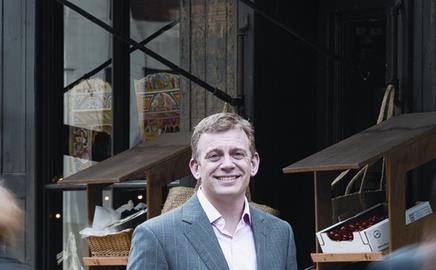Jon Emery, the man behind Hammersonãs redevelopment of the Birmingham Bullring, is repeating the trick in Bristol and Leicester. He tells Lucy Handley why the era of the indoor out-of-town shopping centre is over and why he doesnãt enjoy spending time at Bluewater
Jon Emery is the UK managing director of developer Hammerson, though some people refer to him as ãMr Bullringã. Having led Birminghamãs famous ôÈ330m development, Emery is now immersed in other pioneering town centre schemes, two of which are set to open next year: Cabot Circus in Bristol, a ôÈ245m, 92,000m2 joint venture with Land Securities, and the ôÈ210m, 60,000m2 Highcross in Leicester, which is being developed with Hermes. Heãs known for his willingness to embrace quality architecture, and for eye-catching developments that reinvent what shopping centres are all about. So we decided to find out what he thinks the future holdsãÎ
What will the shopping centres of the future look like?
Thereãs no single answer. Each city needs a slightly different solution, not just aesthetically but also because the competition is different. Weãre being a lot more experimental in how we put schemes together hotels appear in almost every one of our schemes, cinemas appear too, and catering content is now more than 10%.
I think moving from an indoor to an outdoor environment is quite significant. Weãre trying to take the best of indoor centres - security, weather protection, all the hygiene factors you need but remove their surburban nature and connect them into the city to make it more likely consumers that will stay longer. Spending all day in Bluewater is something I sort of struggle with as an enjoyable experience, even with its vast array of shops. Spending all day in a city like Liverpool or Birmingham or Manchester, on the other hand, has got much more going for it.
How important is architecture to shopping centres?
I think itãs fundamental. A building that shows off your city is like a magnet, and with mixed-use schemes coming in, a single design solution is no longer tenable.
We like working with architects who have an intelligence beyond the bow ties and the black polo necks. Some of the practices we are using are very small and the risk is that theyãre going to struggle with the amount of work, so in some cases we put them together with other practices.
What are the architectural trends in retail?
I think weãll see a range of clusters being created through different street patterns, so there will be an area for high street shops, one for local shops and so on. We might say: ãWe could refurbish that little street there and that could be our local shops, and these listed buildings here could be our premium brands.ã
we like working with architects who have an intelligence beyond the black polo necks ãÎ
Thereãll also be more vertical separation of buildings so weãll have a building that has residential above and shops below, but architecturally wrapped with the same finish. The scale of the buildings is obviously getting bigger with more levels and greater density. And I think weãll see a narrowing of streets as well everything is getting taller and closer together.
Can shopping centres be truly sustainable?
Thatãs a good question can anywhere be truly sustainable? Weãve looked at all our developments to see what we can do. At Leicester we took out all the residential electric heating and put in a central biomass dual-fuel boiler. My recurring comment was that I didnãt want Hammerson to be responsible for building the last dinosaurs. To me, it was no excuse to say: ãWell, we designed it seven years ago, so we canãt do anything about it now.ã The builder was very co-operative, changing the plasterboard and blockwork to have higher recycled content.
Weãre targeting BREEAM ãexcellentã for all of our schemes. Itãs fundamental and itãs incredible how quickly itãs become normal thinking already.
Any regrets?
I would be very happy to take my three-year-old son and point at all the buildings that daddyãs been involved in. Iãm proud of all of them. When we did the Bullring, I thought it would have been nice to get some more catering in the scheme. I think it missed that a little bit, and shortly afterwards I thought it would have been nice to put some residential on top of it as well.
What have you learned from your less successful developments?
Iãve learned that there are easier ways of making money! There needs to be a very clear vision of what youãre trying to achieve. There are so many things along the way that will dilute it, whether itãs the construction process, the quantity surveying or the retail leasing process. There are a lot of stumbling blocks, which will bring you back to solutions that wonãt stand the test of time. We all know shopping centres that are just very dull.
Retail is all about fashion and the moment thatãs why the construction process needs to respond to change very rapidly. If the shape of the jeans has changed, the environment that retailers want to occupy will change as well.
Topics
Retail Supplement Nov 2007
- 1
- 2
- 3
- 4
- 5
- 6
- 7
 Currently reading
Currently readingThe outdoors type
- 8
- 9


































No comments yet